Every year in the garden is odd in some manner, and probably most years are unusual in many respects. Though friends and neighbors might declare the weather for a season to be “normal”, there are in fact variations that determine that unpredictability in the garden is to be expected.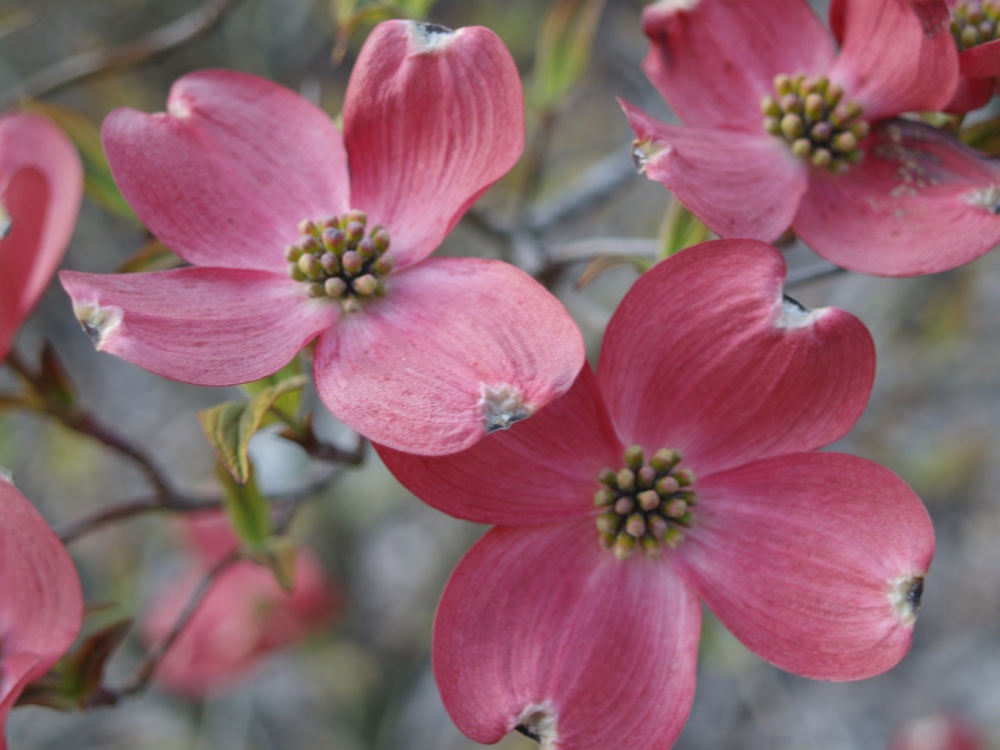
I say with relative certainty that the native dogwood (Cornus florida ‘Rubrum’, above) will begin to bloom in mid April, but I’m not surprised when it blooms a week earlier or two weeks later, or even if those in my garden flower a week later than my neighbor’s. The timing of leaves coloring in Autumn is similarly imprecise, but more so.
In the mid-Atlantic region our first frost arrives as early as late September or as late as the end of October. This year dry weather in August and early September forced birch and ash to defoliate earlier than normal, and cool and wet , but not cold, conditions since have slowed leave’s changing colors. Or not. A few miles further than my daily drive the opposite could be true, so expect nature to act naturally, unpredictably.
Though I’ve nearly run out of space, I love planting trees, and advise considering trees first when planning a garden, then hardscapes such as patios and walks, prior to figuring the small stuff. The shrubs, perennials, and flowering bulbs easily fall in place once the bones are set. But which trees are best? Is Autumn foliage color a worthwhile consideration in selecting a tree?
Today we’ll explore some of the trees in the garden with notable foliage color, and a few from the neighborhood. What we won’t show are the red leafed cultivars of Red maple (Acer rubrum), simply because you’ve already seen plenty in your neighbors’ landscapes and maybe your own. They’re a fine tree, fast growing, and quite nice when the leaves turn, but we need more diversity in our gardens, not more maples. We will make an allowance to slip in a Sugar maple (Acer saccharum, above), and of course we can’t do without Japanese maples for their wonderful attributes, including colorful leaves in Autumn.
The long, wooded southeast border of my garden is mostly native red maples (also called swamp maple) and Tulip poplars, and neither has Fall color worth mentioning (sickly yellow is an apt description). With an overabundance of maples I chose several cultivars of European beech (Fagus sylvatica, above), Black Gum (Nyssa sylvatica), Ginkgo (Ginkgo biloba, below)), and Katsura (Cercidiphyllum japonicum) for the large trees in the garden, and a bunch of smaller trees, some with excellent foliage color, others not.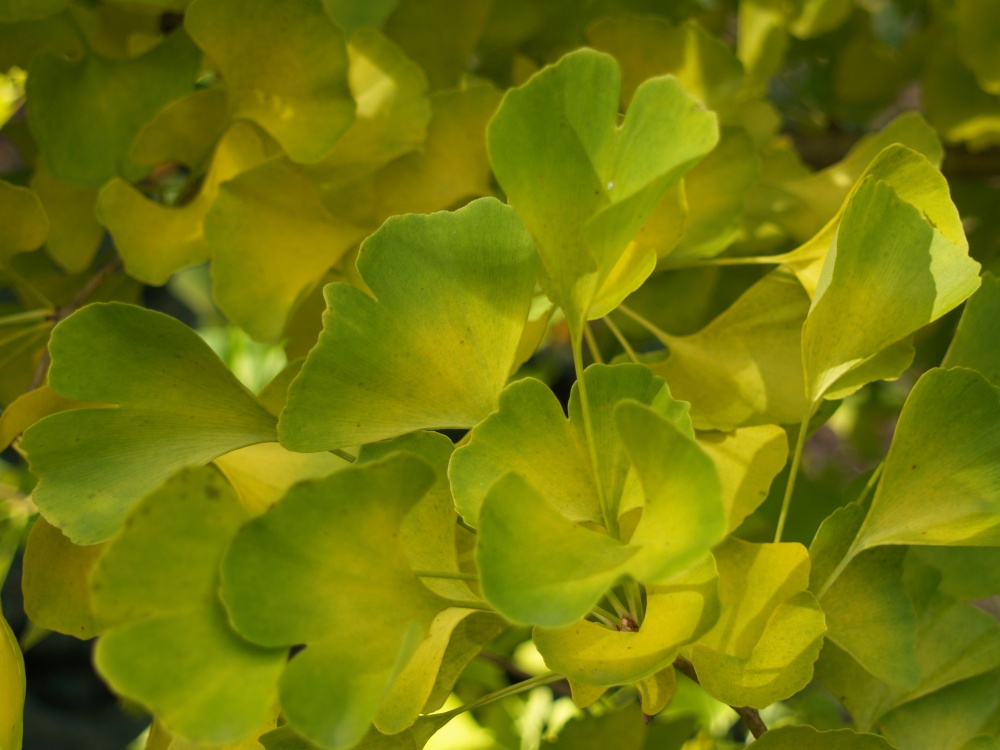
The Franklin Tree (Franklinia alatamaha, below) blooms from August into late September, and some years the foliage will turn early enough to be a delightful backdrop for the last of the white, camellia-like flowers. Not this year, but the blooms and Autumn foliage colors are long lasting, and remarkable. Franklinia is not often found in nurseries, I suppose because it is difficult to transplant, but worth searching for from specialty mail order growers. 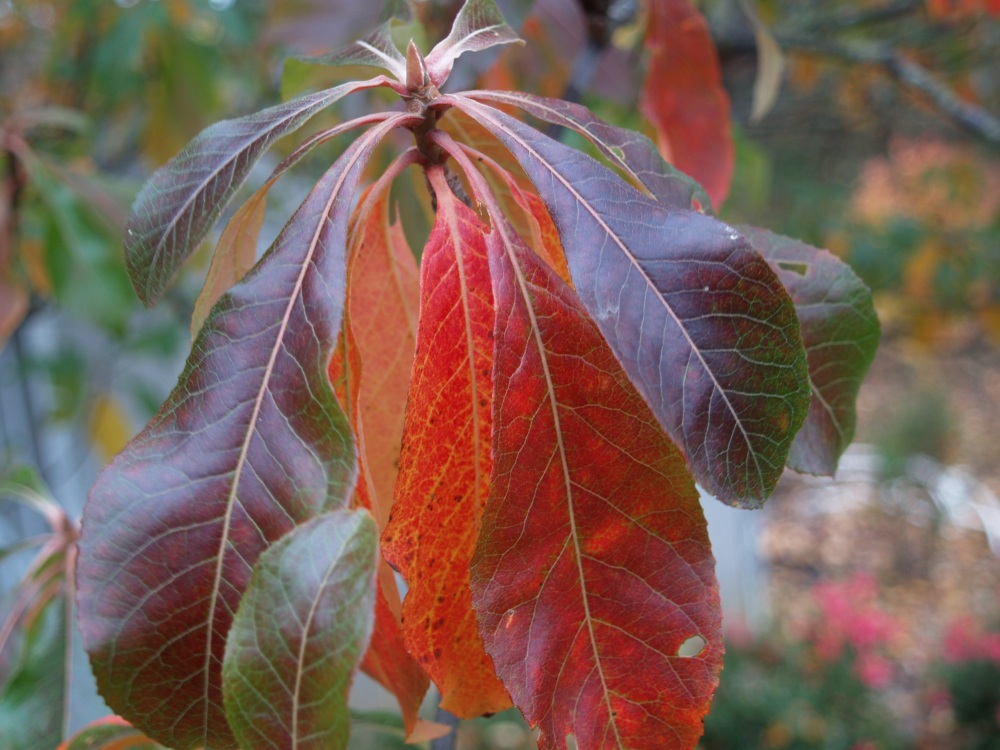
Japanese Stewartia (Stewartia psuedocamellia, below) is slow to become established, but after a handful of years this small tree in my garden has begun to grow with more vigor, enough that the long branching bent under the weight of the flower buds. The blooms are quite similar to the Franklin Tree, but the flowering season is not so long. 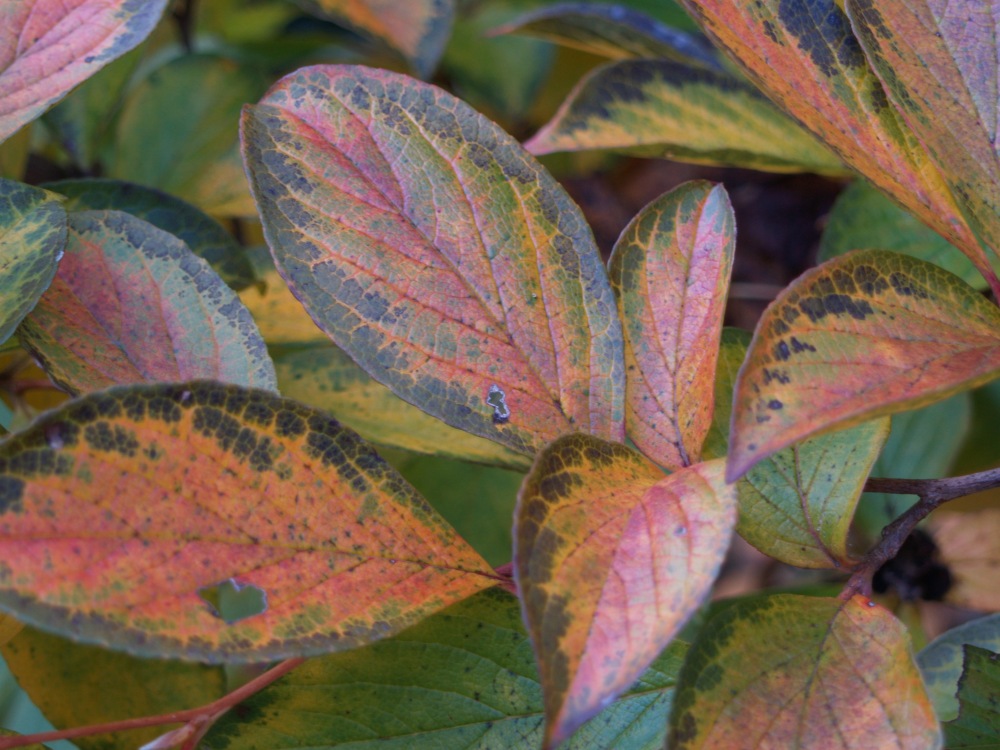
‘Satomi’ dogwood (Cornus kousa ‘Satomi’, below) is a pink flowering Kousa dogwood, blooming in mid May to early June, well after our native dogwood. The leaves of Satomi are broader and glossier than other dogwoods, and the mottled Fall color is of particular interest on my strolls through the garden.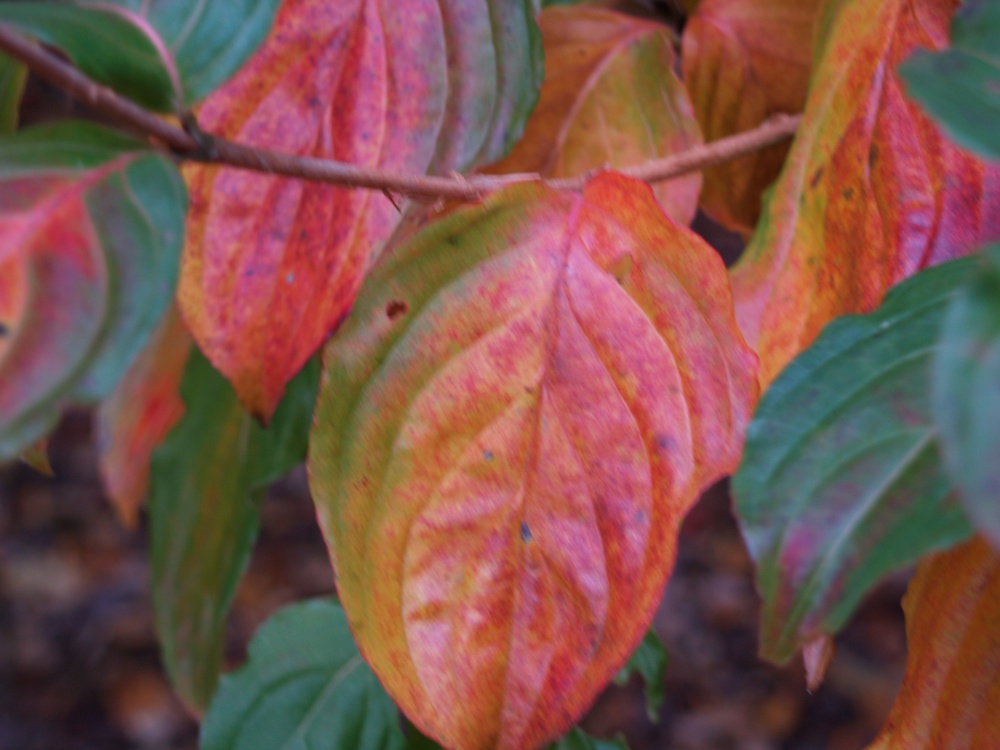
Cherokee Princess dogwood (Cornus florida ‘Cherokee Princess’, below) is a vigorous selection of our native dogwood, though more disease resistant than the native. It is just as beautiful, with white blooms before leaves develop, excellent Fall color, and red berries that often persist through the Winter.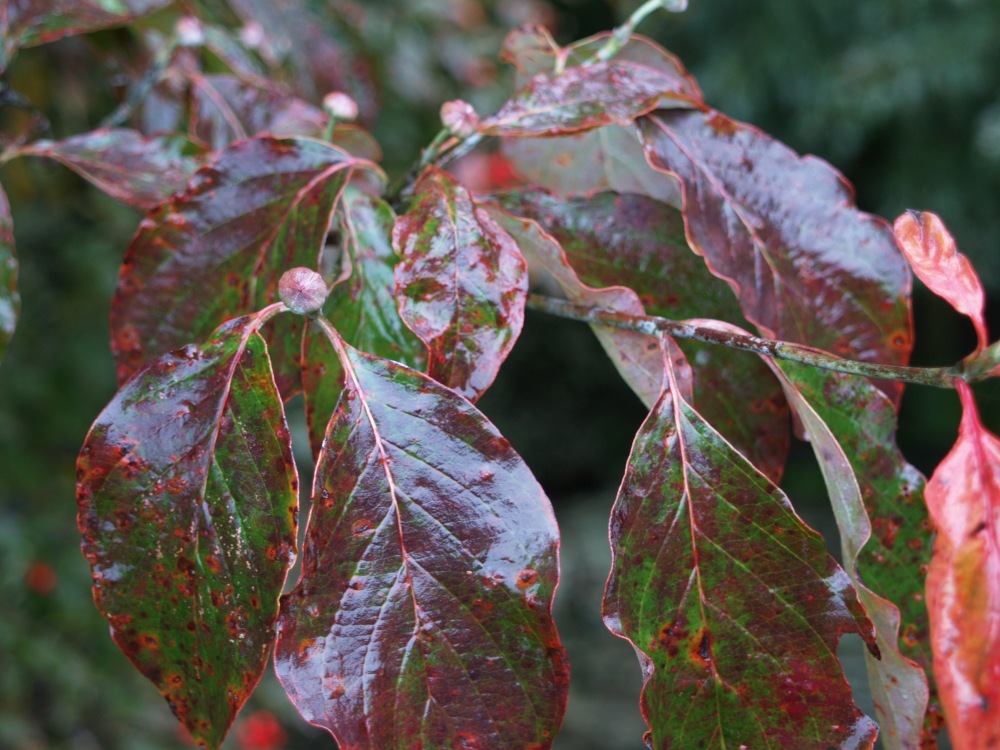
Sioux (Lagestromia ‘Sioux’ below) is my favorite of the crapemyrtles, with excellent dark green leaves and long lasting pink pannicles in mid Summer, but also outstanding Autumn foliage color.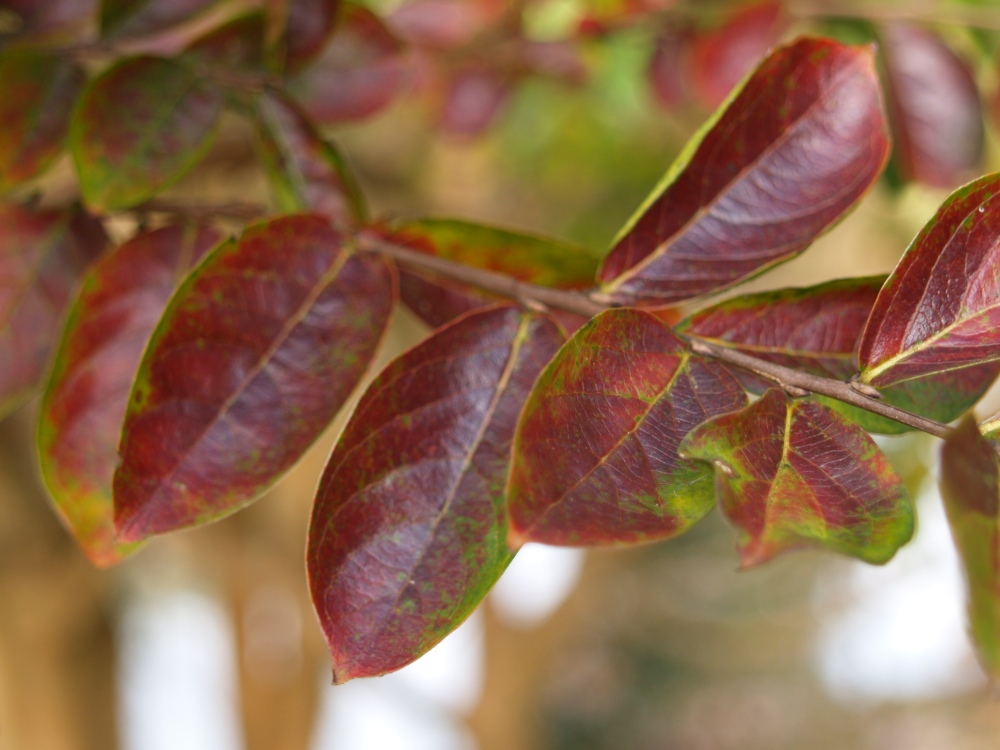
Later in the week we’ll see the Japanese maples that are nearly as spectacular in their Fall coloring as they are unique in leaf shape, and somewhere we’ll squeeze in some of the flowers that persist through the early frosts into November.
One Comment Add yours